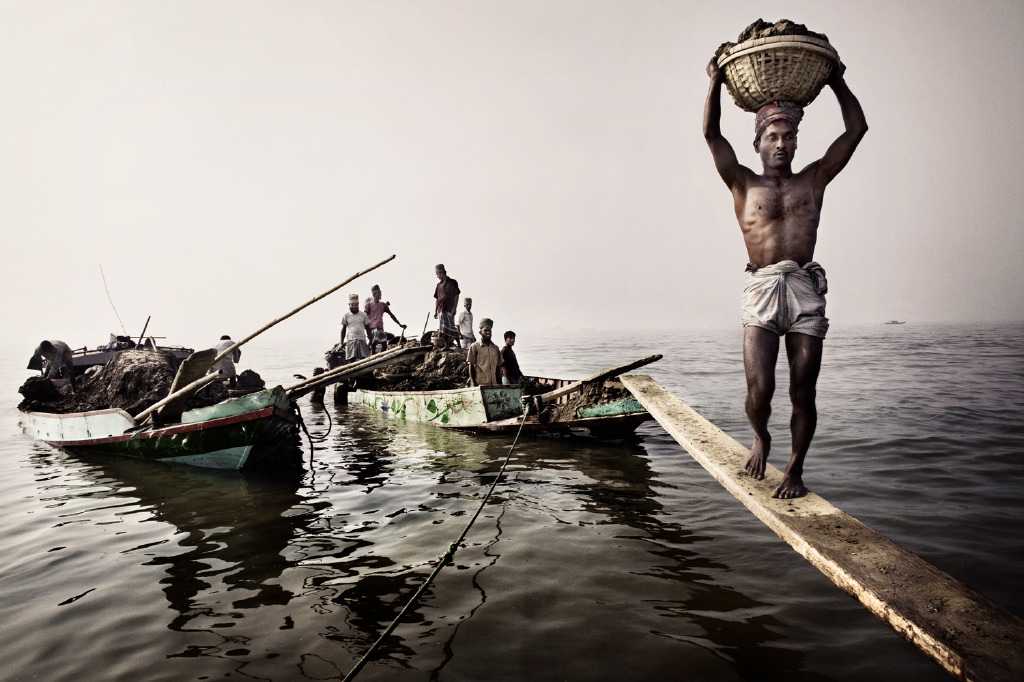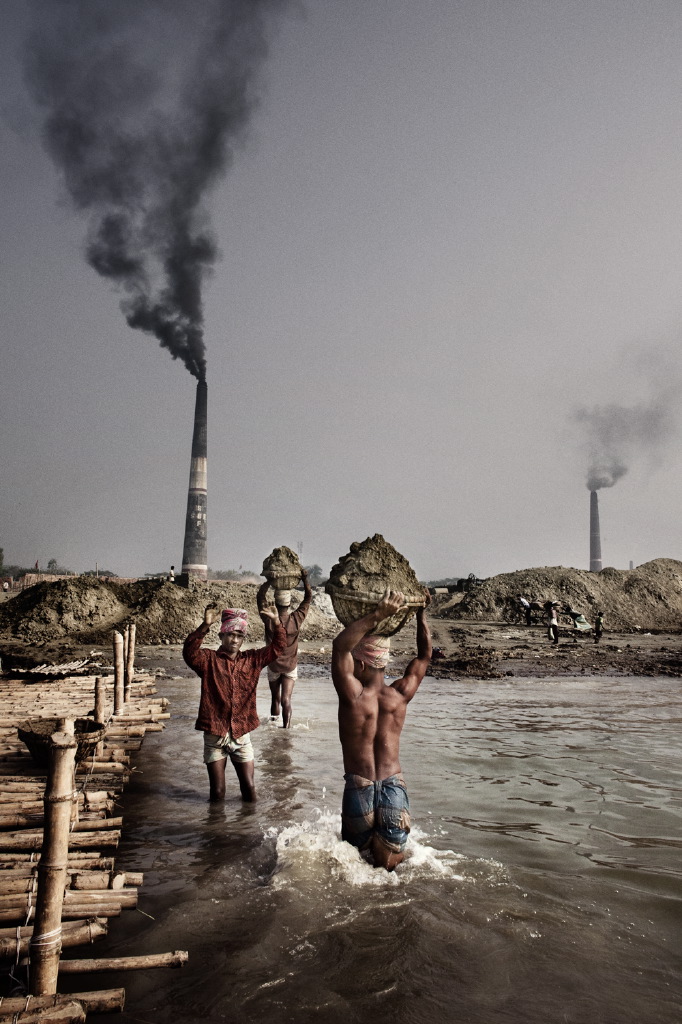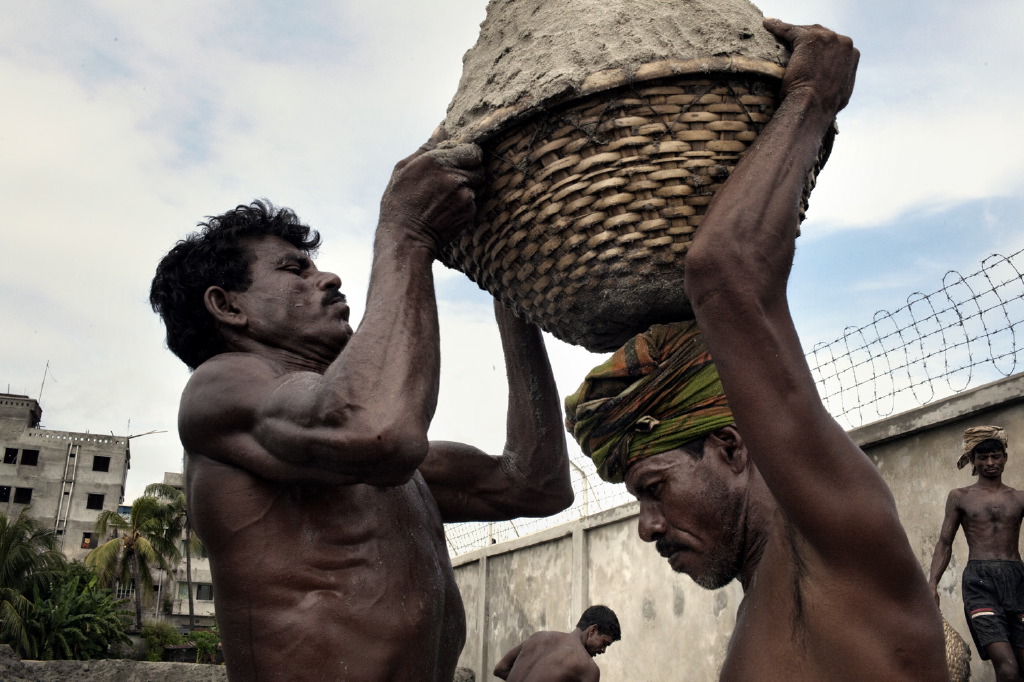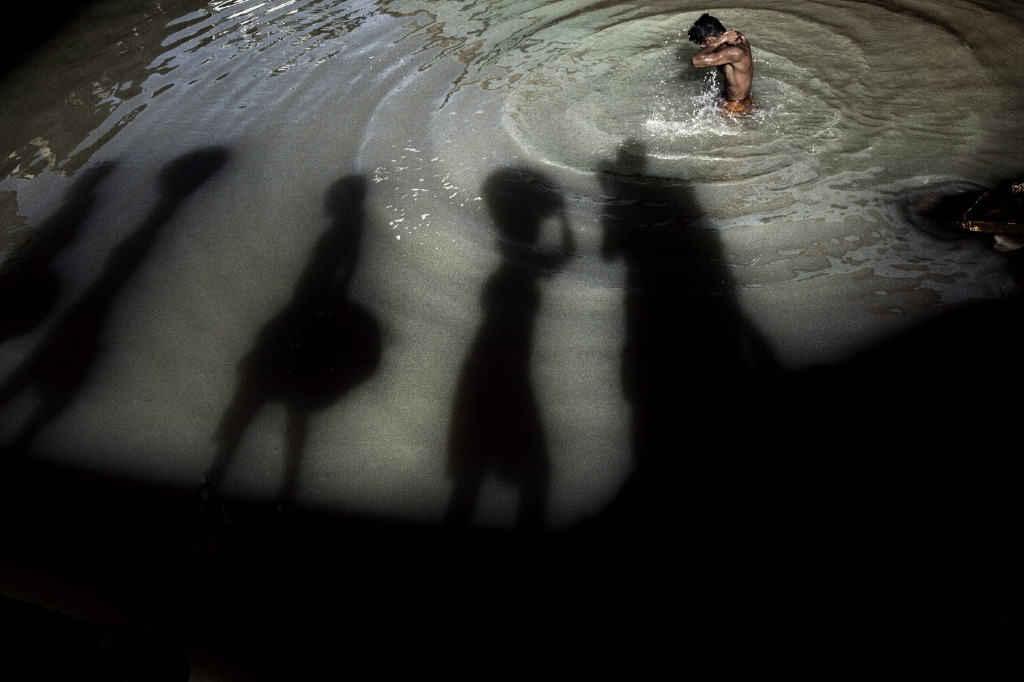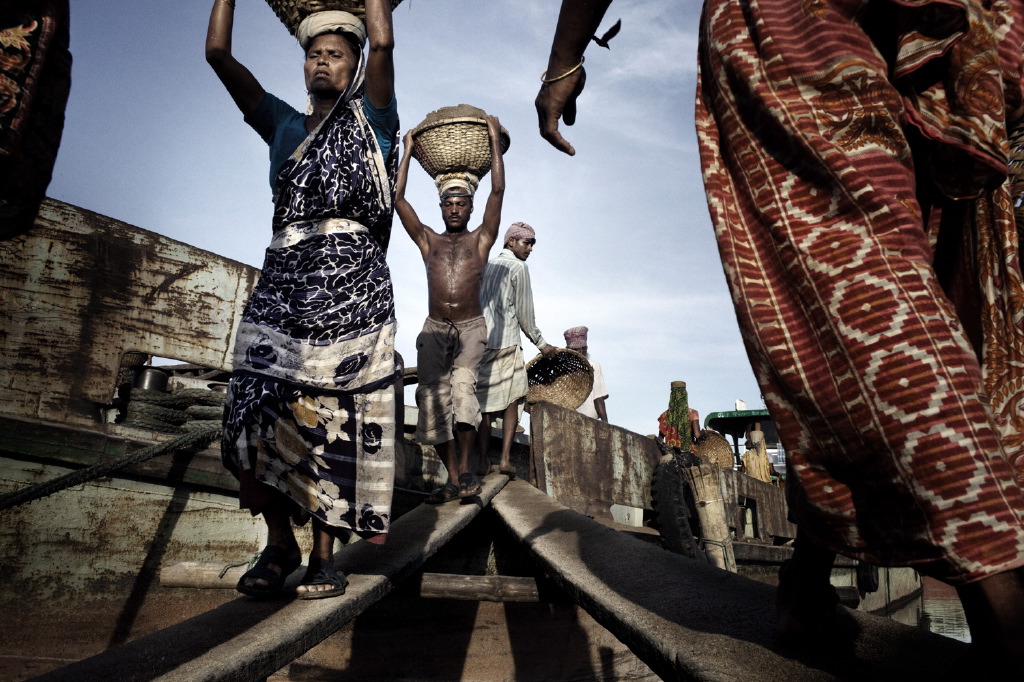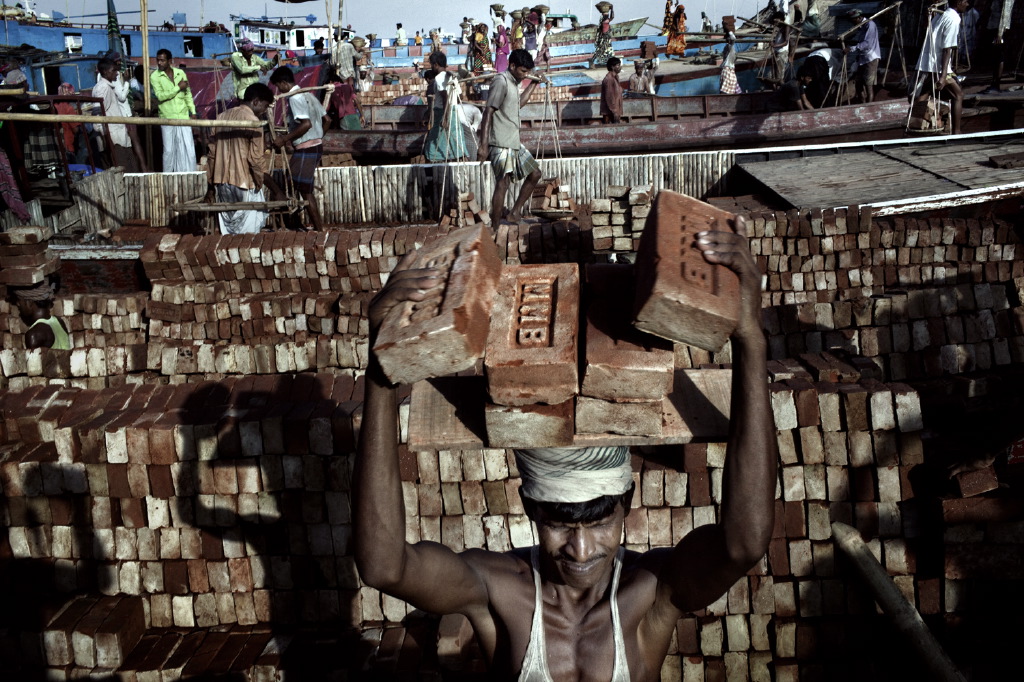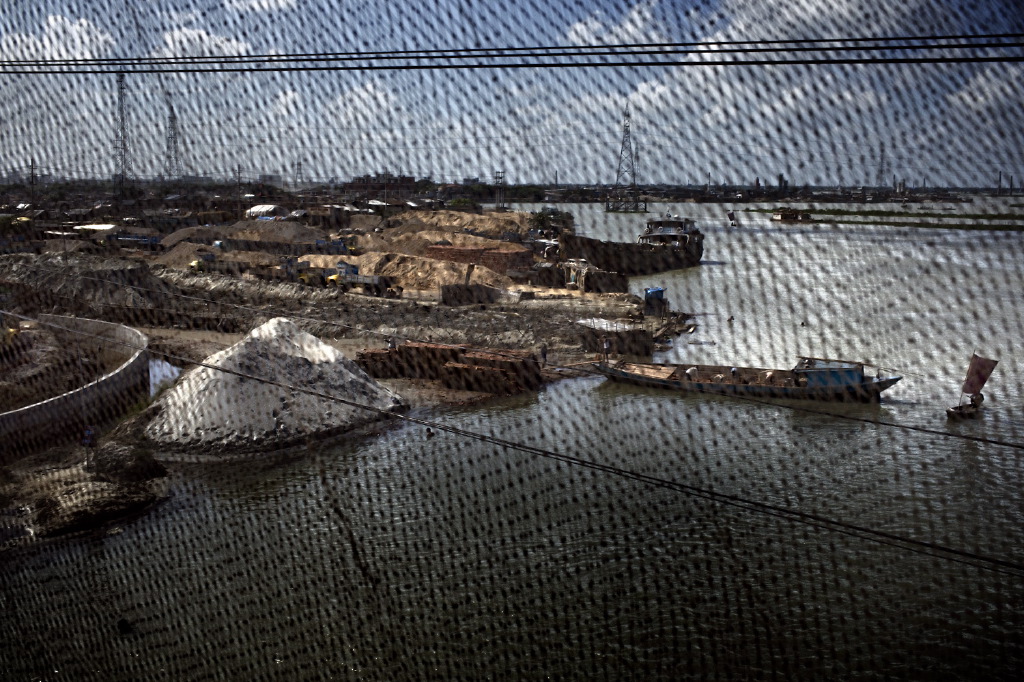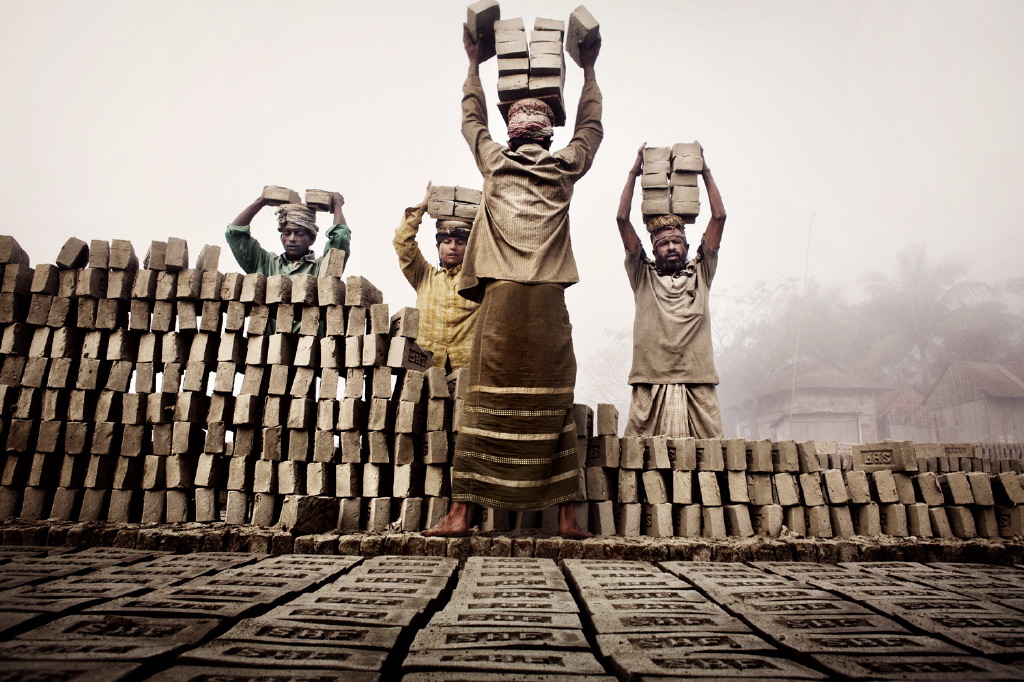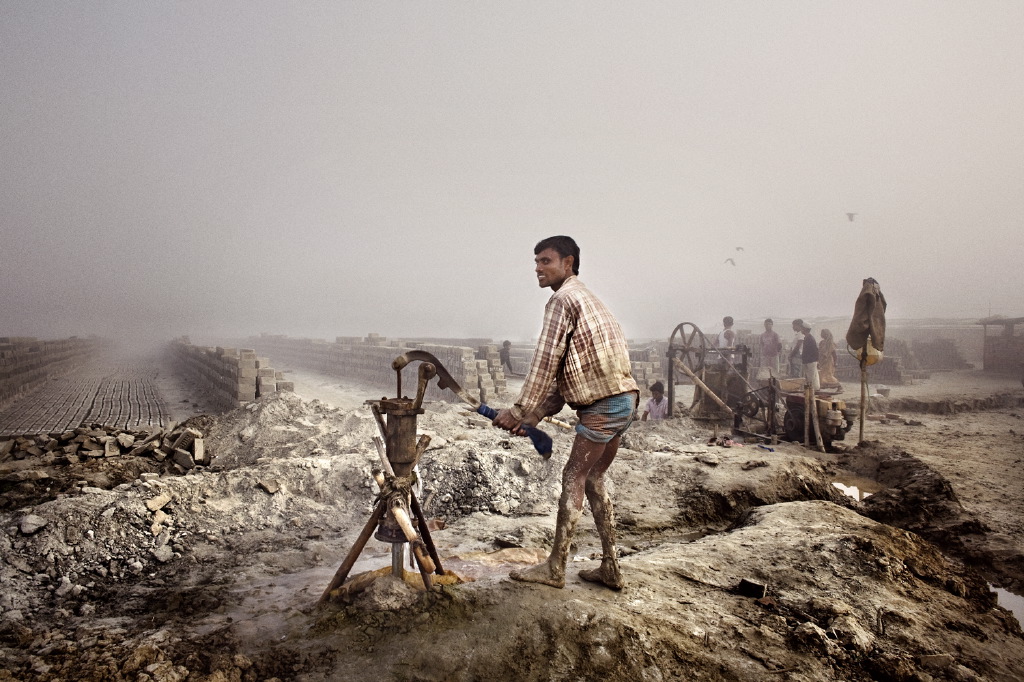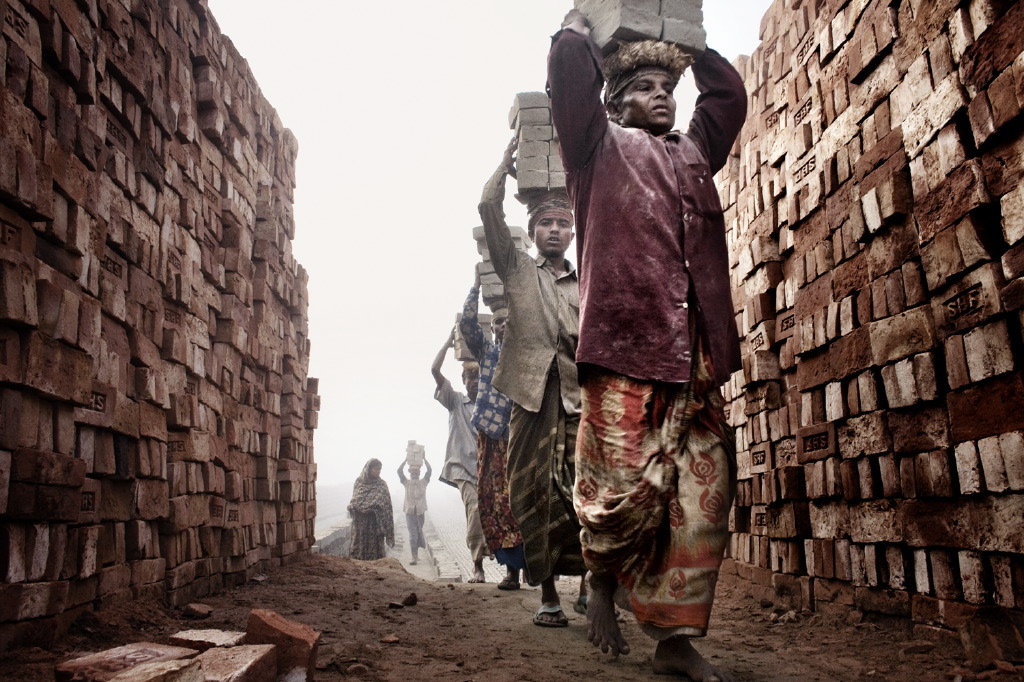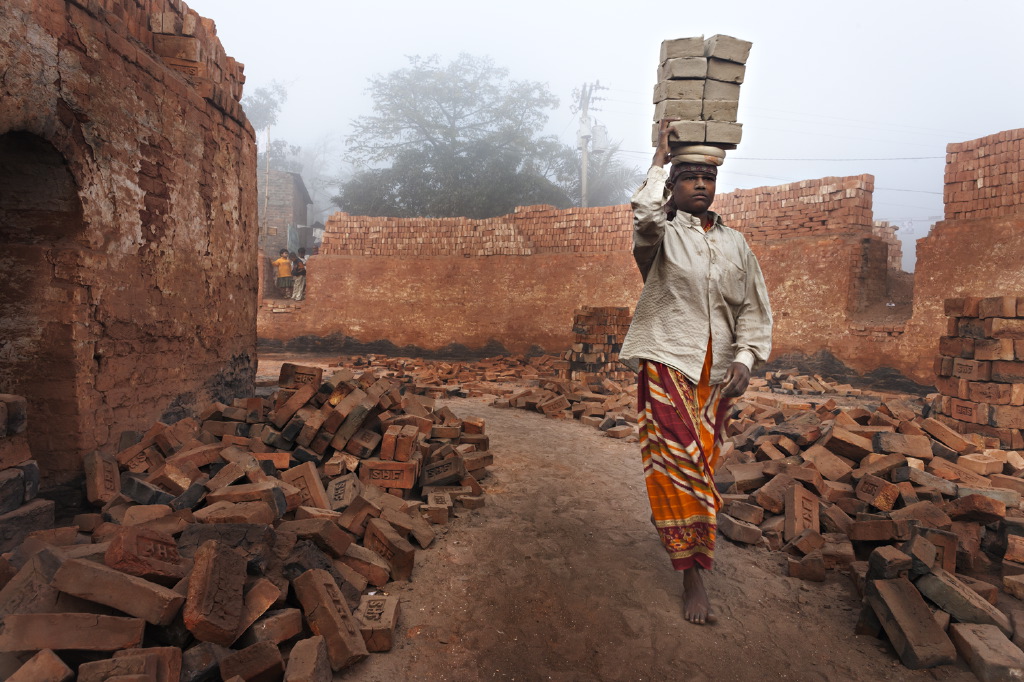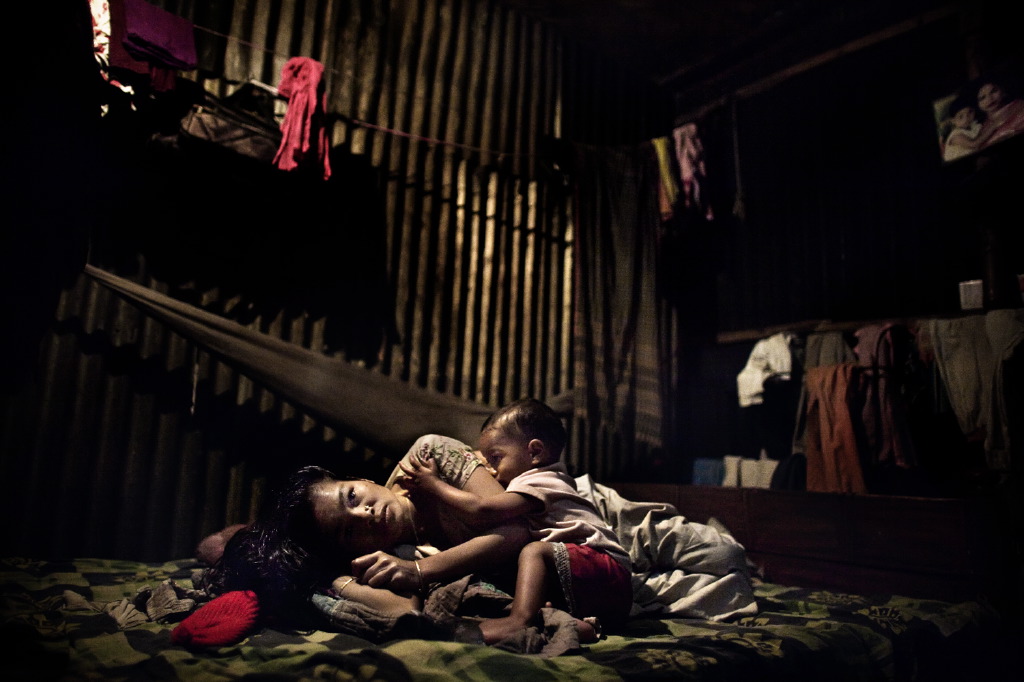X
Bangladesh is located on the deltas of several major rivers flowing into the Bay of Bengal. The country’s position on such alluvial plain involves little natural rock available, that is necessary for bricks making, the main material for buildings construction. To meet this demand, there are approximately 5.000 privately operated bricks kilns in the country, including 1.000 around the capital Dhaka. Men and women emigrate to the outskirts of cities and work here as they did 150 years ago: they collect the clay from humid areas, mix it with water, shape bricks with their hands, let them dry in the sun, and then make them “cook” in the traditional ovens. The furnaces activity has serious consequences on workers’ health and the surrounding environment. Bangladeshi furnaces are estimated to release more than 9.8 million tons of greenhouse gases into the air on a yearly basis. Smoke from smokestacks harms eyes, lungs and throats, endangering workers health and surrounding villages. In addition, approximately 25% of the national timber production is used as fuel for furnaces, causing massive deforestation. In the bricks trap, not only adults are entangled, but also children. They work for hours, earning as much as the adults do, because the daily pay depends on the number of bricks one can carry. “Under the weight of bricks” is a photo-reportage by Luca Catalano Gonzaga, funded by the Nando and Elsa Peretti Foundation. (text by Luca Catalano Gonzaga).
